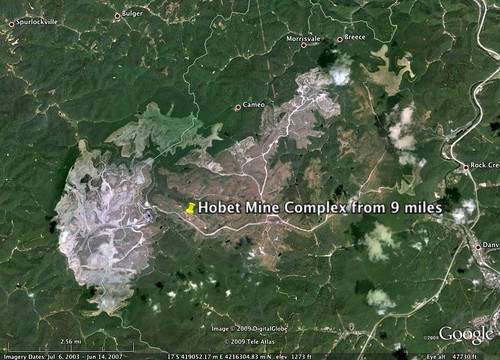Misleading “Energy Sprawl” Study Pollutes Climate Debate
This is cross posted from The Huffington Post and iLoveMountains.org
As Congress was returning from the August recess, there wasn’t much news about the climate bill. The only energy-related news breaking through the coverage of the rancorous health care debates and town-hall tea parties was a study on “energy sprawl” published by five staff members of the Nature Conservancy.
“Renewable Energy Needs Land, Lots Of Land” was the headline of an August 28th story on NPR about the study.
“Renewable technologies increase energy sprawl,” was the headline summary on the journal Nature’s website.
Senator Lamar Alexander of Tennessee, in an Op/Ed published in the Wall Street Journal, summed up the message that was heard by legislators and the public from the news coverage of the study:
“we’re about to destroy the environment in the name of saving it.”
The interesting thing about the news coverage is that none of it addressed the actual analysis. The study didn’t actually measure the impacts of different energy technologies, but rather compiled estimates from a smattering of reports, fact sheets and brochures from government and industry sources in order to arrive at an acre-per-unit of energy figure for each energy technology. Those figures were then applied to the Energy Information Administration’s modeling of four climate policy scenarios under consideration by Congress.
So the coverage was generated not by the study’s results, but entirely by the assumptions that went into it about the relative impacts of renewable versus conventional energy technologies. Looking at the counter-intuitive findings (wind is 8 times as destructive as coal), it’s no wonder that the media took such an interest.
To put those assumptions in perspective, the habitat impact of the Mount Storm Wind Farm in the first image is assumed to be 25% greater than the impact of the 12,000 acre Hobet mountaintop removal mine in the second image (images are taken from the same altitude and perspective; the bright connect-the-dots feature in the windfarm image is the actual area disturbed):



 By now you’ve heard about the DC-based lobbying firm that sent
By now you’ve heard about the DC-based lobbying firm that sent 
 Coal is in the blood of the people of Wise County, Virginia. With a population of around 41,000, the coal industry has provided steady income for an otherwise remote part of Appalachia. Situated in the southwest corner of the Commonwealth, the county boasts several small, tight-knit communities, a functional public school system, two colleges, and a thriving sense of mountainous spirit that hallmarks Appalachian living.
Coal is in the blood of the people of Wise County, Virginia. With a population of around 41,000, the coal industry has provided steady income for an otherwise remote part of Appalachia. Situated in the southwest corner of the Commonwealth, the county boasts several small, tight-knit communities, a functional public school system, two colleges, and a thriving sense of mountainous spirit that hallmarks Appalachian living.

